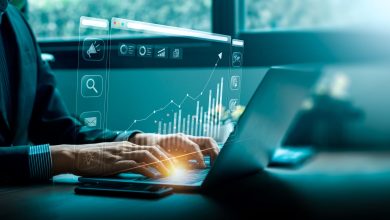Ask ten traders how they use artificial intelligence and you will probably get ten different answers. Some see it as a way to save time, others treat it as an extra set of eyes on the market, a few avoid it completely. But one thing is clear: AI is no longer an abstract idea. It is a practical tool that is changing how the forex market is approached.
For people involved in forex trading with platforms like Exness, AI has become a way to sift through the noise. The technology can analyse thousands of pieces of information in seconds, flag potential opportunities, and even run tests before a trader risks real money.
Testing Before Committing
One area where AI has had an immediate impact is in strategy testing. Traders can now run their ideas through simulated conditions and see results instantly. Instead of waiting weeks to learn if an approach works, they can collect that feedback in minutes.
Pairing this with a demo trading account through Exness makes the process even safer. AI can monitor how a plan performs, point out patterns in winning and losing trades, and suggest adjustments. The trader remains in charge, but the heavy lifting of analysis is offloaded to the system. This also allows them to fine-tune their approach in a low-pressure environment, so when they do trade with real funds, they are acting on tested strategies rather than guesswork.
Fast Markets, Faster Insights
The forex market can shift in the blink of an eye. A central bank announcement or economic report can trigger moves in seconds. AI thrives in this environment because it can scan multiple currency pairs and indicators at once, reacting faster than manual analysis.
This speed matters. It can be the difference between catching a move early and missing it altogether. That said, quick reactions are not automatically good reactions. The best use of AI’s speed is when it is combined with human oversight, making sure that trades fit into a bigger plan rather than chasing every flicker on a chart. Even traders who love the speed often set clear boundaries to avoid overtrading on impulse.
Managing Risk with More Data
Instead of running a single calculation, AI can take a trade idea and play out a range of “what if” situations. What if prices jump? What if they drift lower for days? What if nothing much happens at all? Looking at these possibilities gives traders a broader view before they commit.
Some traders also use AI to keep an eye on their own habits. It might point out that they take bigger trades after a loss, or that they often close out a position just before it turns in their favour. Nobody likes to see their flaws in black and white, but that awareness can be the first step in improving.
Adapting to Market Shifts
Forex markets change for countless reasons, such as a shift in interest rates, an election result, or even a surprise announcement from a major economy. AI can adjust to some of these changes by reweighting the signals it pays attention to and by tuning its approach as new data arrives.
Of course, there are times when it will miss the mark. Sudden events with no historical precedent can confuse even the smartest systems, which is why traders still keep a hand on the wheel. Staying engaged helps ensure that human judgment fills the gaps AI cannot cover.
Learning by Observation
For some, the biggest benefit of AI is not the trades it suggests but what it teaches along the way. Watching the way it reacts to different pieces of news or how it ranks certain signals can reveal ideas a trader might never have considered.
Beginners often use it as a kind of second opinion. If their own view lines up with what the AI is showing, it can build confidence. If not, it becomes a reason to dig deeper and figure out why. Over time, this process can sharpen both technical skills and market awareness.
This learning is especially effective when combined with practice accounts or small-scale trades, where the stakes are lower but the market behaviour is still real.
Automation with Boundaries
One of the most talked-about uses of AI in forex is automated execution. Once certain rules are met, the trade goes through without any manual action. This can keep emotions out of the process and ensure consistent application of a strategy.
Yet full automation has risks. It can keep trading through unexpected events, and not every market move is worth acting on. Many traders now use a hybrid model, letting AI handle scanning and alerts while they reserve the final decision for themselves.
Knowing the Limits
There is plenty of AI that can do well, but some market drivers are tricky to turn into code. Rapid changes in sentiment, unexpected headlines, or unpredictable political events can move markets in ways no model anticipates.
The traders who make the most of AI tend to treat it as an assistant rather than a boss. It helps them see more, and faster, but the final choice still rests with the person in front of the screen.
Checking the quality of the data feeding the AI is part of this process. If the inputs are poor, the outputs will be too. This is true no matter how advanced the system appears to be.
The Road Ahead
Technology keeps moving forward, AI tools today can scan bigger data sets, react more quickly, and present the results in a way that is easier to read than ever before, that trend will likely continue.
Even so, the essentials of trading remain. Planning ahead, managing risk, and staying disciplined will still matter more than any single piece of software. AI can support all of these, but it does not replace the trader’s role.
Final Thoughts
Artificial intelligence is becoming part of the trading landscape. It can help with research, testing, and execution, but it works best as part of a balanced approach.
The technology brings speed and sharp analysis. The trader adds judgment, adaptability, and a sense of timing. Together, they can tackle the challenges of a market that is always in motion.



